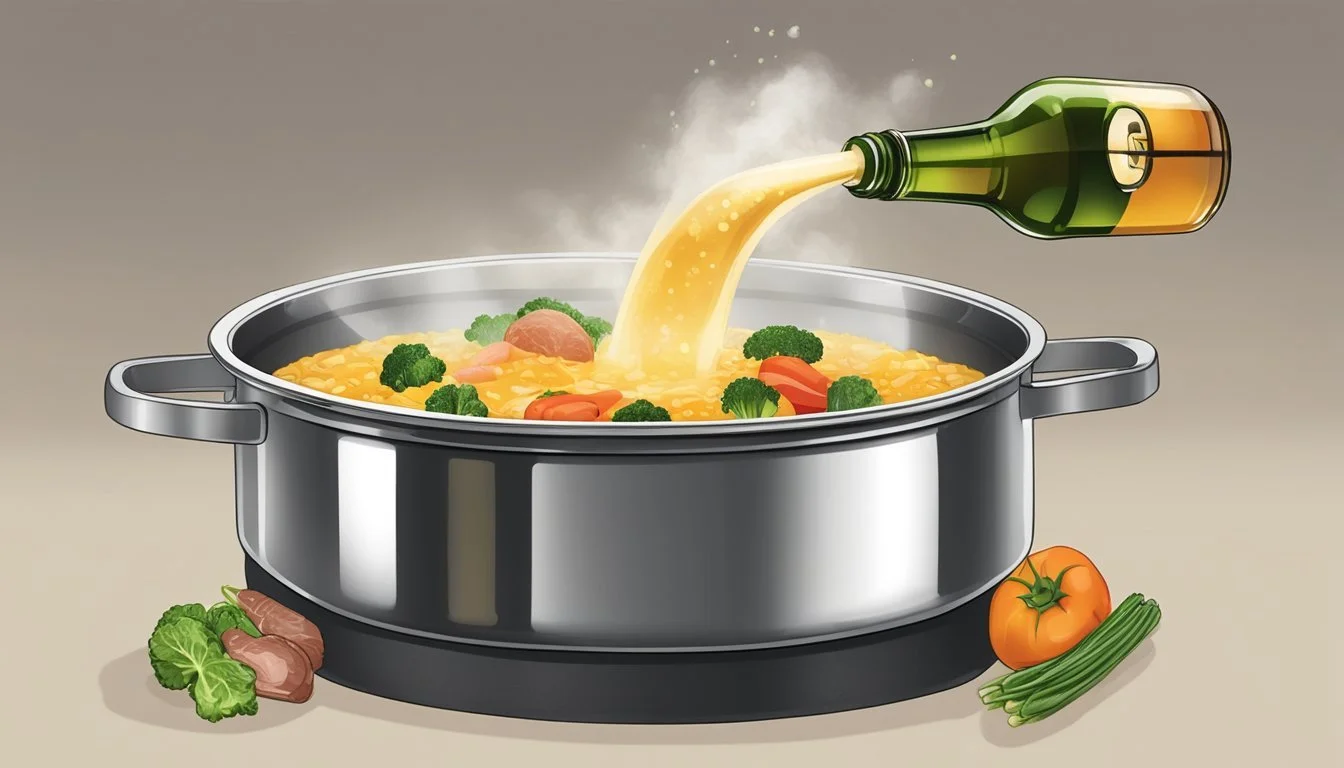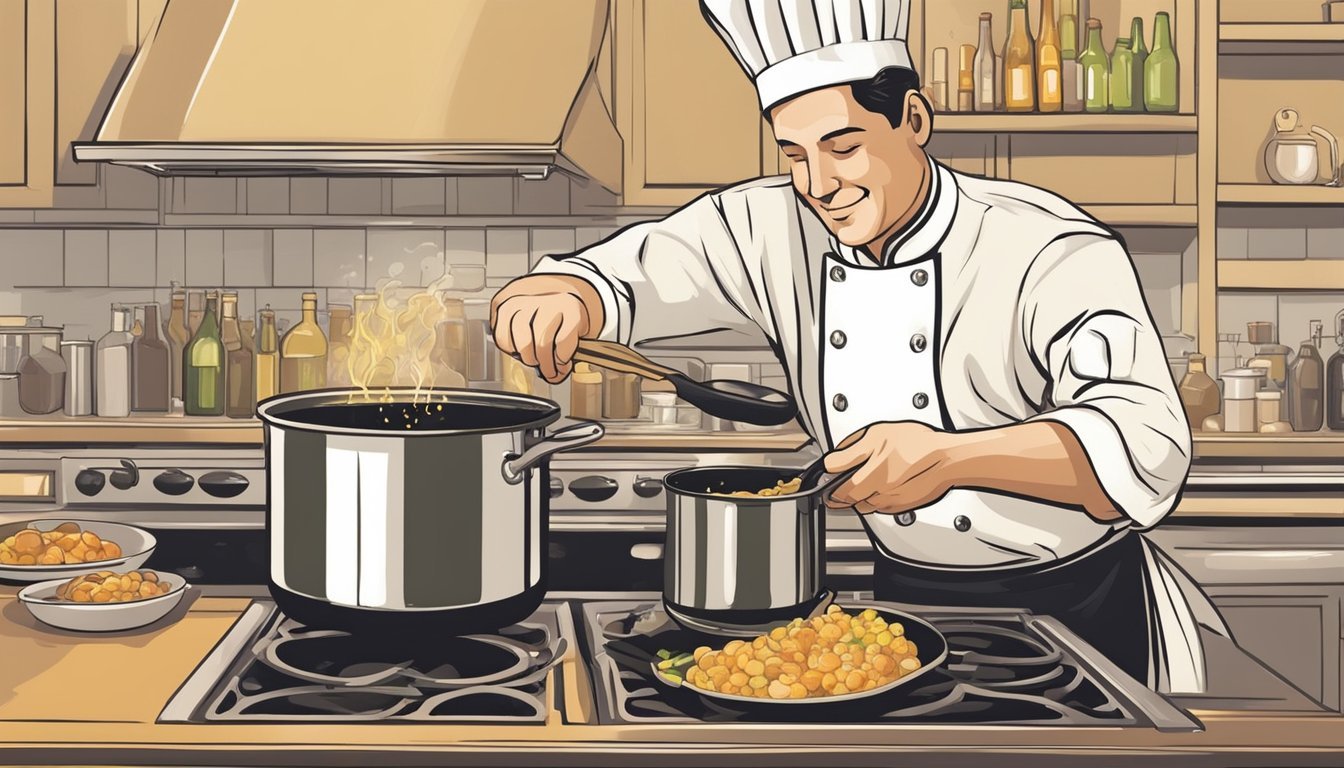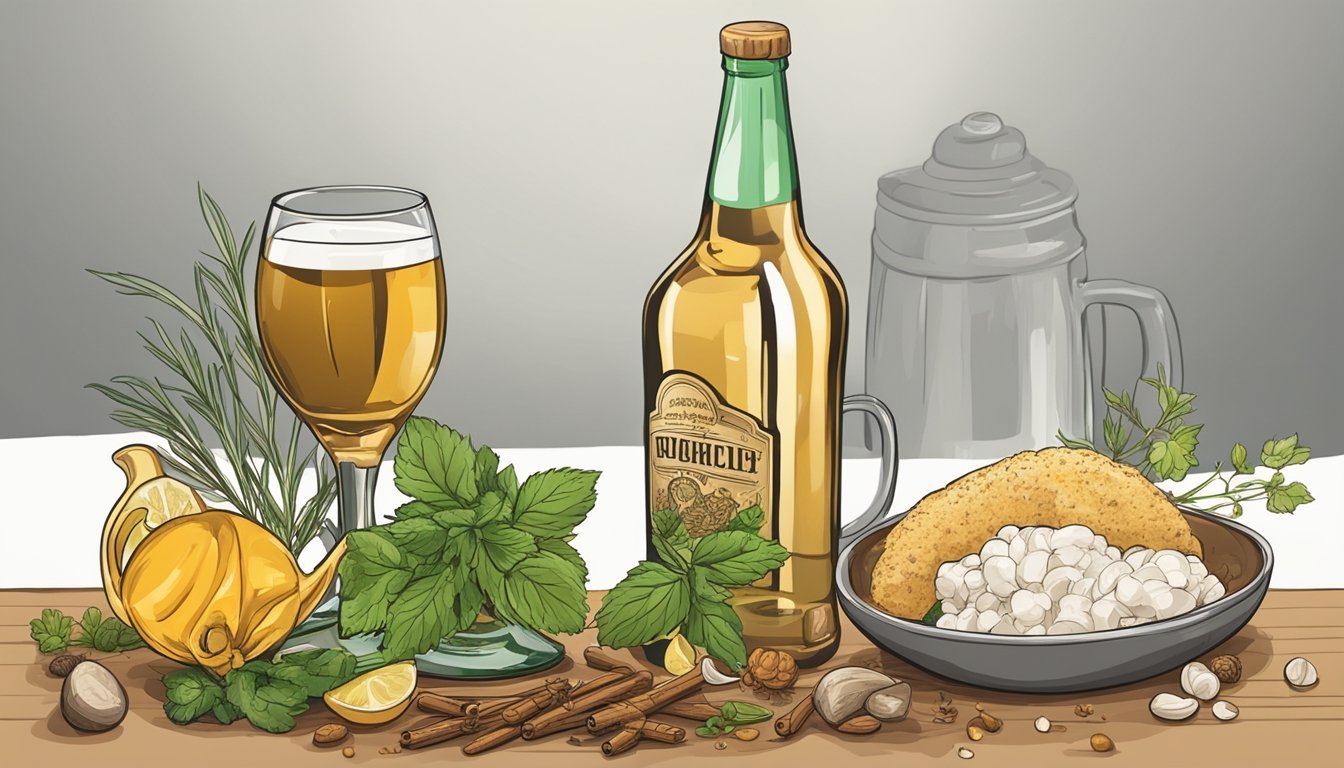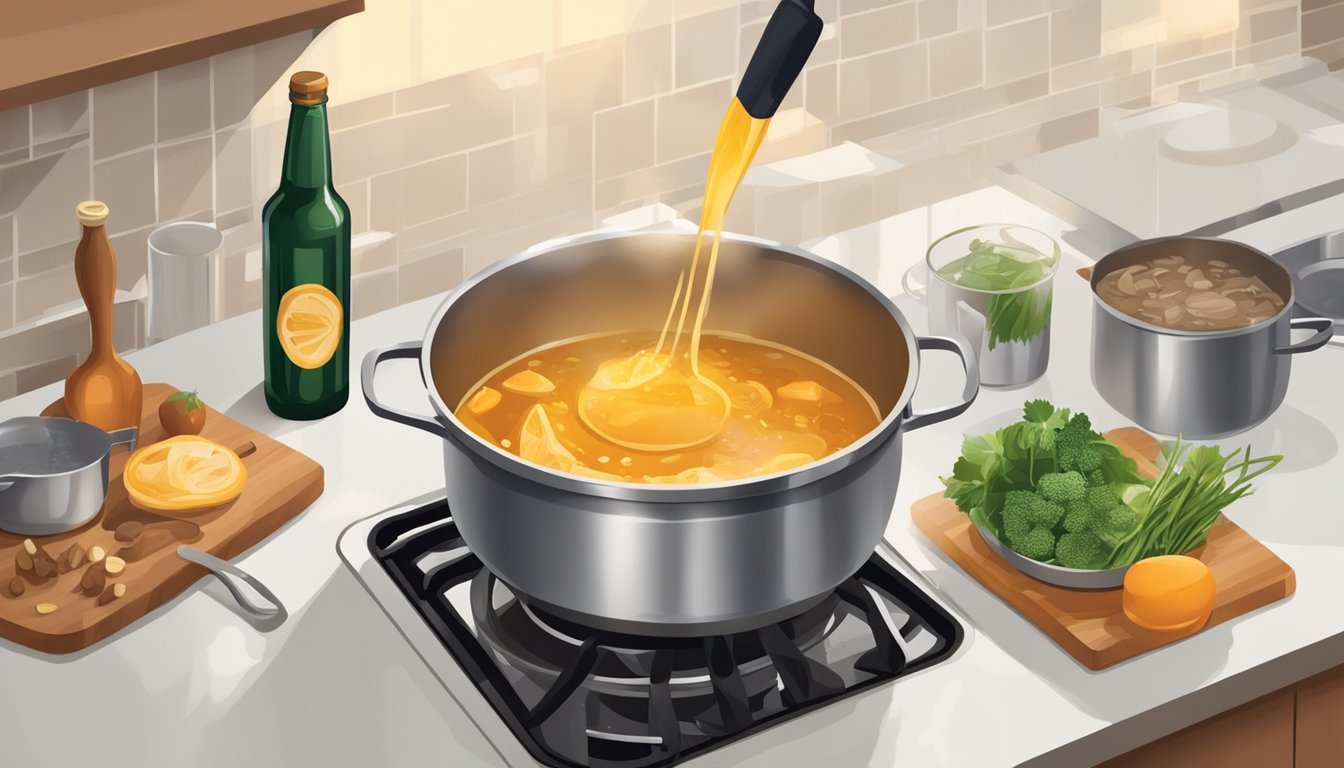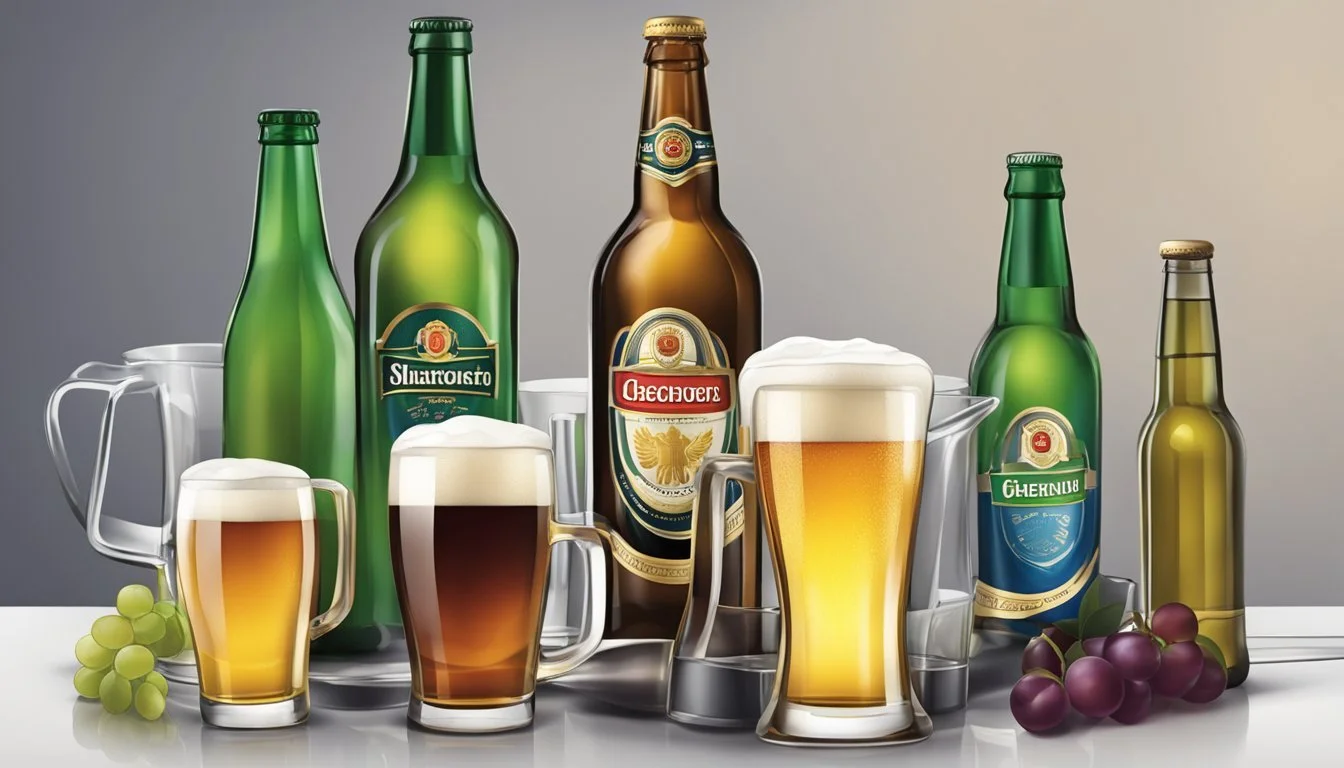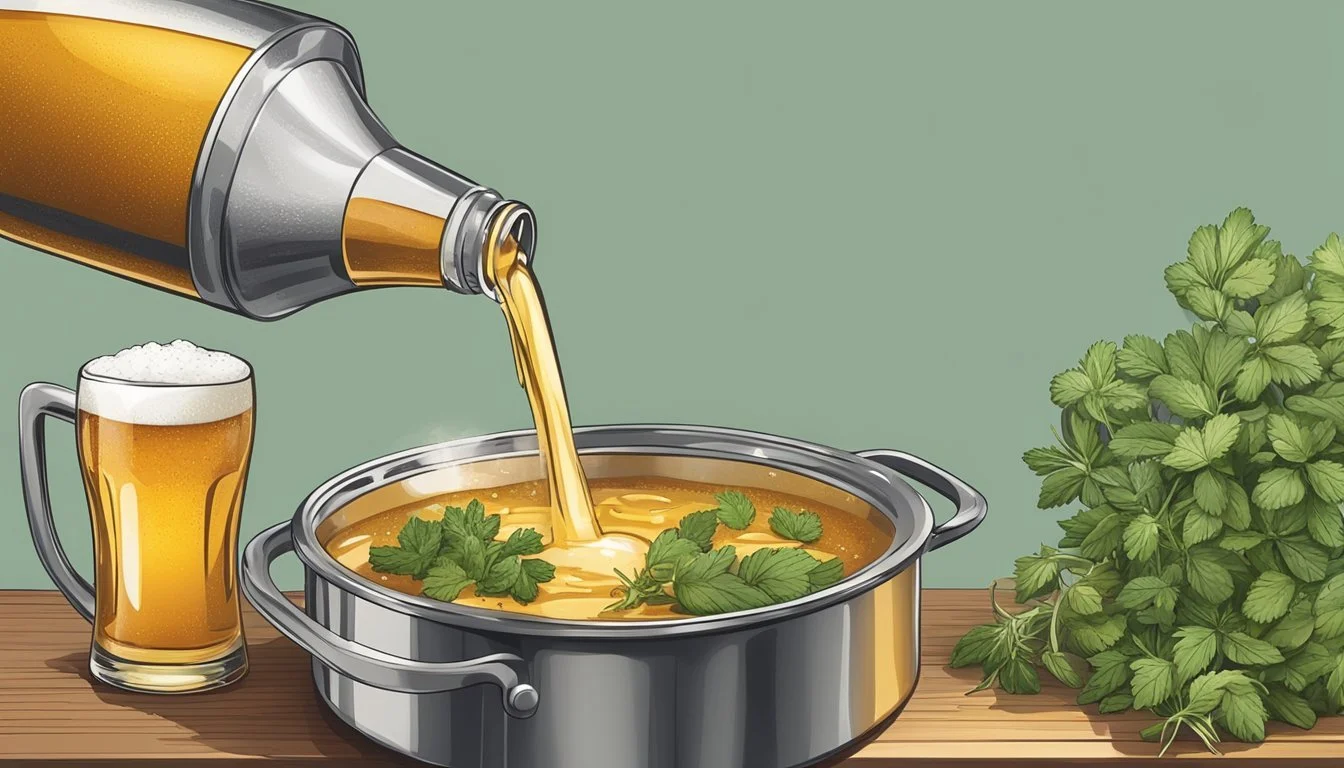How to Substitute Beer for Wine in Cooking
Simple Swap Guide
Substituting beer for wine in cooking can lead to surprisingly delightful results, as both can enhance the flavors of a dish in unique ways. While wine is traditionally used for its acidity, depth and fruity undertones, beer offers a range of flavors from malty sweetness to hoppy bitterness, which can complement or even elevate various recipes. Understanding how to make this substitution can enhance one's culinary versatility and provide a solution when wine is not an option.
To successfully substitute beer for wine, one must consider the type of beer and its compatibility with the other ingredients in the recipe. Light beers can often mimic the refreshing qualities of white wine, adding a subtle yeasty note to dishes without overpowering them. On the other hand, darker beers with more pronounced malt profiles can serve as a stand-in for red wine, contributing rich, caramel-like flavors to heartier recipes. It's important to match the beer's flavor intensity and profile with the dish's requirements to achieve the best culinary outcome.
Understanding Cooking With Alcohol
Cooking with alcohol involves a nuanced interplay between flavor enhancement and physical changes in the ingredients, with considerations for alcohol content and heat interaction being paramount.
Roles of Alcohol in Cooking
Alcohol serves several roles in cooking and baking:
Flavor: Different alcoholic beverages, like wine and beer, impart a variety of flavors ranging from sweet to bitter, contributing to the depth of flavor in dishes.
Tenderizing meat: The alcohol acts as a marinade that can break down proteins in meat, making it more tender.
Cooking and baking: When used in baking or cooking, alcoholic beverages can influence the texture and moisture level of the final product.
Alcohol Content and Cooking Considerations
When alcohol is added to food, the following factors should be kept in mind:
Evaporation: Not all the alcohol content evaporates during cooking. The amount that remains depends on cooking time, temperature, and method.
Residual Alcohol:
A quick flambé may leave a significant amount of alcohol, while long simmering reduces it but doesn't completely eliminate it.
In baking, due to the enclosed environment of an oven, less alcohol evaporates compared to open-flame cooking.
Alcoholic beverages, such as wine and beer, have different alcohol content levels that can affect the dish's outcome. Lower alcohol content can mean less evaporation and a milder influence on flavor, while higher alcohol beverages could lend more robust notes to the dish. Chefs must consider these factors to achieve the desired culinary result while cooking with alcohol.
Importance of Flavor Profiles
When substituting beer for wine in cooking, understanding the key aspects of flavor profiles is essential to maintain the integrity of a recipe. It ensures that the intended taste and aroma of the dish are preserved or enhanced when using an alternative ingredient.
Flavor Matching Principals
The primary focus in flavor matching is identifying the characteristics of the wine specified in the recipe and selecting a beer that displays similar traits. For instance:
White wines often impart fruity and floral notes to dishes, and a light beer with citrus undertones can be a suitable substitute.
Red wines typically contribute a robust, tannic flavor, which one may mimic with a darker ale or stout.
Choosing the right substitution is crucial for harmonious integration into sauces and marinades where the wine plays a significant role in the sensory profile.
Balancing Acidity and Sweetness
When substituting beer for wine, chefs must balance acidity and sweetness to match the original flavor profile of the recipe. While wines naturally offer a balance, beers can range widely in these aspects.
Acidity: If a recipe calls for a wine with high acidity, one should opt for a beer that leans towards the sour spectrum, or consider adding a small amount of vinegar or lemon juice to achieve a similar tartness.
Sweetness: Light beers tend to be less sweet than many wines, so one might need to add a touch of juice or a sweet ingredient to the recipe to compensate.
A structured approach to flavor matching and careful adjustments of sweetness and acidity are imperative when one uses beer as a substitute for wine in culinary applications.
Substituting Beer for Wine in Recipes
When substituting beer for wine in cooking, it is essential to consider the type of beer that will best complement the flavor profile and complexity of the dish, especially when it comes to sauces, stews, and braising.
Light Beer for White Wine
In recipes that require white wine, light beers can be an excellent substitute due to their subtle flavors and lower bitterness. They can contribute a similar crispness and complexity to dishes without overpowering other ingredients.
Flavor Profile: Opt for a light beer that offers a clean and crisp taste, which can mimic the refreshing quality of white wine.
Suitable Dishes: Incorporate light beer as a replacement in sauces, seafood dishes, (What wine goes well with seafood dishes?) and poultry recipes where white wine would typically be used to deglaze or add acidity.
Dark Beer for Red Wine
Dark beer can replace red wine in cooking where robust flavors are desired. The malty sweetness and depth of dark beers can add a unique character to a recipe.
Flavor Profile: Choose a dark beer that has a rich and complex flavor, similar to the full-bodied taste of red wine.
Suitable Dishes: Utilize dark beer as a substitute in heartier dishes like stews and braised meats (What wine goes well with braised meats?) that would benefit from the richness and flavor depth that red wine provides.
By selecting the appropriate type of beer to replace wine in cooking, one can achieve a harmonious balance of flavors that are true to the original recipe's intentions.
Non-Alcoholic Alternatives
When seeking non-alcoholic substitutes for beer in cooking, one can select from a variety of stocks and broths or flavorful juices and sodas. These alternatives can closely match the intended role of beer in recipes, enhancing taste without the alcohol content.
Using Stocks and Broths
Stocks and broths offer a savory depth to dishes that typically call for beer. A common choice is chicken broth for lighter beers and beef broth for darker ales. Both carry the necessary flavors without overpowering the dish. Mushroom stock stands out as a hearty, earthy base that can replace stouts or porters. When substituting, it's important to maintain a one-to-one ratio to keep the dish's liquid balance consistent.
Juices and Sodas as Substitutes
For those requiring a sweet or tangy profile, consider using apple juice or white grape juice. They introduce fruity sweetness akin to light beers. Similarly, ginger ale or soda water can mimic the carbonation and spicy notes beer would contribute to batters and marinades. Root beer may serve as an alternative to dark beers, providing a unique sweet and sarsaparilla flavor. Non-alcoholic beer can also be used directly as a one-to-one substitute, retaining the beer taste without the alcohol.
Specific Considerations for Cooking Techniques
When substituting beer for wine in cooking, a chef must consider the differences in acidity, moisture content, and flavor profiles that can affect the outcome of the dish. Each cooking technique may require a unique approach to achieve the desired results.
Marinades and Tenderizing
Marinades serve two purposes: to infuse meat with flavor and to tenderize. When beer is used in place of wine, it's important to note that beer is less acidic. This means:
Beer: Can tenderize meat over a longer period without risk of toughening.
Wine: Its higher acidity levels make it a quicker tenderizing agent.
Chefs may consider adjusting marination times or adding a small amount of vinegar to the marinade to mimic the acidity of wine.
Batters and Baking
Beer and wine both contribute moisture and a nuanced taste to batters and baked goods. However, they differ in the following ways:
Beer: Often used in batter for its carbonation, which creates a light and crisp texture.
Wine: Adds sweetness and acidity, which may need compensation when using beer.
One may need to increase the sugar or introduce acidic components when using beer to retain the expected flavor balance in baked dishes.
Poaching and Braising
These methods typically rely on wine for three key properties: moisture, acidity, and the enrichment of flavors. Beer can act as an effective substitute with certain adjustments:
Moisture: Beer and wine are interchangeable though beer adds a different flavor profile.
Acidity: Beer is generally less acidic, so adding a touch of vinegar can help balance the dish.
Flavor: Light beers are preferable for delicate flavors, while darker beers match well with robust, hearty dishes that wine would also complement.
To maintain the integrity of the dish, chefs must consider the style of beer as a substitute due to its more pronounced and varied taste profiles compared to the relatively subtle notes of wine.
Diverse Ingredient Substitutions
When substituting beer for wine in cooking, one must consider the flavor profiles and how various ingredients can replicate the richness, acidity, and depth that wine contributes to a dish.
From Dairy to Decoctions
Dairy: For creaminess and body, wine can often be replaced with dairy options such as cream or milk, which provide a rich texture.
Table: Dairy and Decoction Substitutions
Wine Replacement Best Used In Note Cream Sauces, Soups Adds richness; best for white wine substitutes. Milk Batters, Soups Can add body to dishes with a lighter profile. Stock Stews, Braises Chicken or beef stock adds depth. Apple Cider Marinades, Braises Brings a sweet and tangy flavor.
Decoctions: Utilizing broths and stocks such as chicken, beef, or vegetable stock can mimic the savory nuances of wine. Alternately, apple cider imparts a sweet-tart element, often suitable for dishes that would benefit from a fruity undertone.
Herbs, Spices, and Flavorings
Herbs and Spices: They add specific undertones to dishes, much like wine. For instance, a combination of Worcestershire sauce and a bit of soy sauce can introduce the fermented complexity of red wine.
List: Herb and Spice Suggestions
Lemon Juice/Vinegar: For the acidity found in white wine, lemon juice or a mild vinegar will suffice.
Vanilla Extract: A teaspoon can replace a tablespoon of sweet wine like sherry in desserts.
Nutritional Yeast/Vegemite: These can offer the umami and richness typically provided by wine.
Flavored Extracts: In desserts and sweet dishes, cognac or amaretto may be replaced with corresponding flavored extracts, such as vanilla extract, ensuring that the dish remains non-alcoholic while still flavorful.
Substitutions for Depth: Gluten-free alternatives may include using nutritional yeast to add a savory flavor in place of beer, which contains gluten and yeast. To replace the deep flavor profiles often introduced by red wines or heavier beers, one could consider soy sauce, cognac, brandy, or amaretto for their robustness and complexity. Take caution with quantities when using extracts or strong condiments, since their flavors can be quite concentrated.
Considerations for Special Diets
When substituting beer for wine in cooking, it is crucial to consider dietary restrictions such as gluten sensitivities and vegan preferences. Sodium content and sweetness levels are also important factors to adjust for those monitoring their salt intake or sugar consumption.
Gluten-Free and Vegan Options
For individuals on a gluten-free diet or those who are gluten-sensitive, traditional beer, which is typically made from barley, is not suitable due to its gluten content. Therefore, a gluten-free beer or wine — which is naturally gluten-free unless gluten-containing additives are used — serves as an appropriate substitute. It is essential to verify that the wine is labeled as gluten-free to ensure it has not been contaminated during processing. Alternatively, non-alcoholic beer that's marked gluten-free can provide similar flavors without alcohol or gluten.
For those following a vegan diet, they must choose beer or wine that doesn't utilize animal-derived products in the filtering process, such as isinglass or gelatin. Wines labeled as vegan are their best bet, as they are assured to be free from these ingredients.
Adjusting Sodium and Sweetness
Beer, especially certain craft beers, can have varying levels of sodium which may affect the desired taste and is a consideration for those on a low-sodium diet. In contrast, most wines have a lower sodium content, making them a suitable substitute for reducing overall sodium in a dish.
To regulate sweetness when substituting wine for beer, one must take into account the inherent sweetness of the beer being replaced. As a rule of thumb:
If the recipe uses a sweet beer, opt for a sweet wine like a Riesling or Moscato.
For recipes requiring a more bitter beer, a dry wine would be most appropriate.
Using the right type of wine can maintain the intended balance of flavors in cooking without adding unnecessary sugars. For those requiring sugar control in their diet, this is a pertinent adjustment.
These considerations ensure that dietary needs are met while still achieving the desired culinary results when beer is substituted with wine in cooking.
Cultural and Historical Context
The interplay between wine and beer in cooking is deeply rooted in cultural heritage and historical practices. Both wine and beer have been integral to human civilization for thousands of years, with their origins linked to the early developments of agriculture and fermentation.
Historical Significance:
In many ancient societies, the fermentation process was not just a means of producing alcoholic beverages but also a form of preserving grains and fruits. Wine, derived from fermented grapes, was prominent in Mediterranean cuisines, while beer, made from brewed grains, was a staple in the diets of many Northern European cultures.
Cultural Significance:
Wine: Often associated with culinary sophistication and used in various sauces, marinades, and stews.
Beer: Viewed as more than just a beverage, it adds depth to bread, batter, and meat dishes.
Substitution Practices:
Historically, wine and beer have been substituted for water in cooking, both to enrich flavor and due to the scarcity of potable water. Recipes adapted to local ingredients, including available alcoholic beverages like wine, beer, brandies, and liqueurs, reflect regional tastes and cooking traditions.
Cooking with Alcoholic Beverages:
Alcoholic beverages, including wine and beer, serve multiple purposes in cooking:
Flavor: Adding complexity to dishes.
Tenderizing: Helping break down protein fibers in meat.
Fermentation: Assisting in the leavening process in bread-making.
As substitution between wine and beer in recipes is not only common but historically resonant, contemporary cooks continue to explore the distinct flavors each beverage imparts, understanding the unique cultural legacies being stirred into their culinary creations.
Conversions and Measurements
When substituting beer for wine in cooking, one must consider the liquid volume to ensure the proportions within the recipe remain balanced. The rule of thumb for substitution within recipes is to use a measure-for-measure swap, keeping the volume of liquid consistent.
Beer and wine can generally be substituted at a one-to-one ratio due to their similar liquid densities. Here is a simple conversion chart:
Beer (volume) Wine (volume) 1 cup 1 cup 1/2 cup 1/2 cup 1/4 cup 1/4 cup 1 tablespoon 1 tablespoon
For baking, certain adjustments may be necessary. When using wine in place of beer, especially when beer's carbonation is critical to the recipe, one might need to add a leavening agent like baking soda to maintain the airy texture. Typically, for each cup of beer, adding 1/2 teaspoon of baking soda should suffice.
In recipes where wine's acidity is essential, one might consider adding a tablespoon of vinegar or lemon juice to each cup of beer to mimic the acidity of wine.
Additionally, non-alcoholic substitutes can be employed. A cooking stock or juice can effectively replace both beer and wine, bearing in mind their flavor notes. For a stronger taste, cooks might use combinations of liquids, such as mixing stock with a splash of vinegar or juice.
When adjusting instructions for cooking with alternatives to beer or wine, chefs should ensure that any replacement not only matches in volume but also harmonizes with the overall flavor profile of the dish they are preparing.
Advanced Flavor Enhancement
When substituting beer for wine in cooking, a chef can creatively enhance flavors by concentrating beer or incorporating exotic substitutes that parallel the complexity of wine.
Alcoholic Syrups and Reductions
The process of creating alcoholic syrups and reductions elevates the intensity and complexity of beer flavors in sauces and marinades. By reducing beer down, one can create a syrupy base that brings a rich, malty sweetness with a touch of bitterness that is perfect for glazing meats or incorporating into rich stews. The same process can be applied to other alcohols like bourbon, cognac, or rum to achieve a similar depth.
Consider following this approach:
Choose a full-bodied beer, such as a stout or porter, for maximal flavor impact.
Gently simmer the beer with aromatic ingredients (like garlic or herbs) until it reduces and thickens into a syrup.
The final syrup can add a layer of complex flavor, enhancing the dish's umami qualities.
Exotic and Gourmet Substitutions
Chefs looking to infuse unique tastes into their dishes can explore exotic and gourmet substitutions for beer that still mimic the subtleties of wine.
Hard Cider: Offers a sweet, fruity substitute with a wine-like quality.
Root Beer or Ginger Ale: Adds a spicy twist, suitable in sweet and savory contexts.
Sake: Provides a mild, umami flavor, great for delicate sauces and seafood dishes.
Champagne: Imparts a light and slightly acidic note, perfect for giving a fresh lift to certain dishes.
Tequila or Rum: Bring bold, spirited notes that can complement tropical and Latin-American cuisines.
Each substitution may contribute differently to the depth of flavor:
Alcohol Substitute Recommended Use Flavor Contribution Hard Cider Braising, deglazing, marinades Sweetness, fruity notes Root Beer Marinades, barbecue sauce Sweetness, unique spiciness Sake Steamed dishes, (What wine goes well with steamed dishes?) sauces Delicate, light umami flavor Champagne Light sauces, seafood dishes Crispness, effervescence Tequila Marinades, Mexican-inspired stews Agave undertones, warmth Rum Desserts, Caribbean cooking Rich sweetness, complexity
Incorporating these substitutes into dishes enhances flavor profiles, offering a tailored experience in lieu of traditional wine-based recipes.
Conclusion
When substituting beer for wine in cooking, one must consider the desired outcome in flavor, acidity, and moisture. Recipes that call for beer, typically a lighter lager or a robust stout, can be effectively modified using various types of wine, with white wine acting as an excellent substitute for lighter beers and red wine for darker beers.
Substitution Guidelines:
Flavor: White wine's crisp profile can mimic the refreshing quality of light beers, while the deeper notes of red wine can replicate the richness of darker beers.
Acidity: Wines generally offer a distinct acidity that can tenderize ingredients, much like beer.
Moisture: Wine should be used in equal measure to beer in a recipe to maintain the intended moisture level.
Here are substitution pairings to guide home chefs:
Beer Type Wine Substitute Light Lager White Wine Stout/Porter Red Wine
It is important for cooks to choose a substitute that complements the other ingredients in their dish. They should be confident in their ability to swap these beverages without compromising the dish's integrity.
Home chefs should taste as they cook, using their judgment to adjust wine quantities as needed. Experimentation is key – over time, cooks will naturally discern which wine varieties best enhance their favorite recipes.

